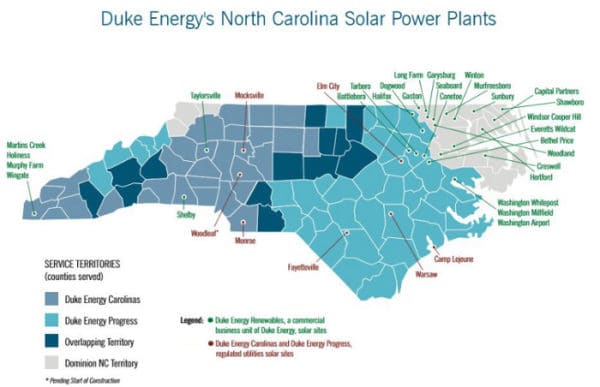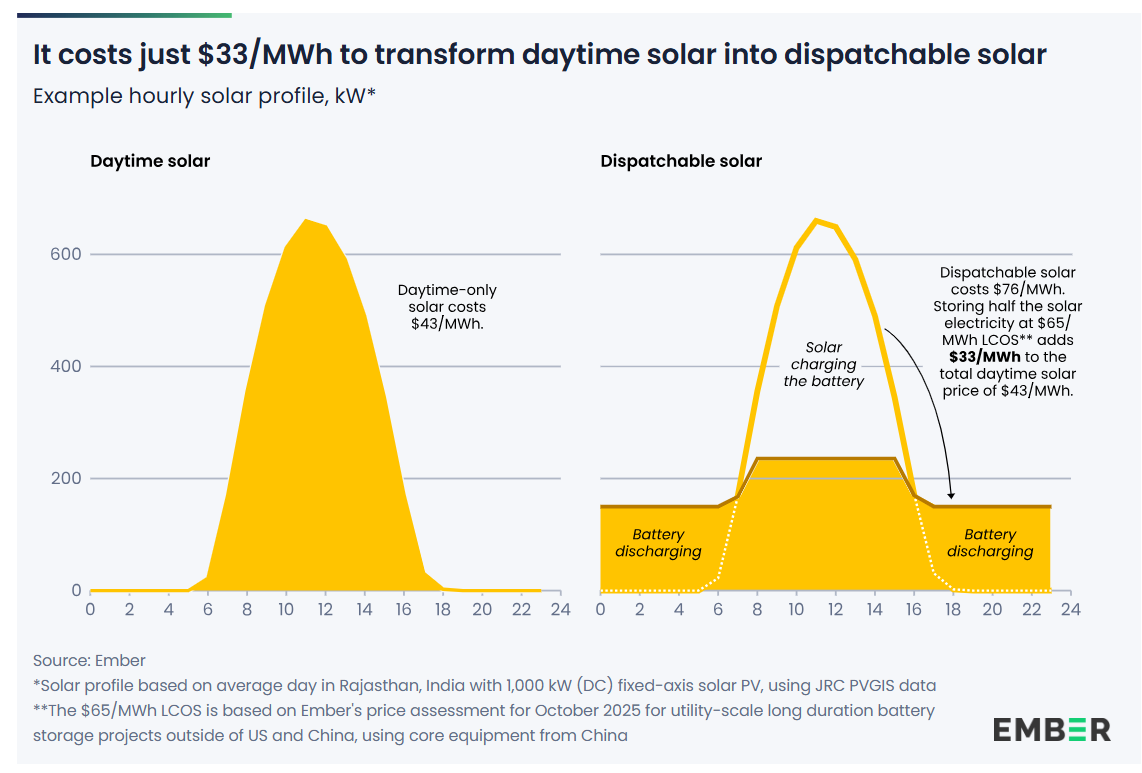In the national rankings for which U.S. state has the most installed PV there is a tight battle taking place below first spot. California is way out in front, but North Carolina, Arizona, and New Jersey are having a friendly tussle for second spot; North Carolina ahead of the pack in the most recent ranking.
North Carolina overtook Arizona during the second quarter of the year, by installing around 115 MW of new solar, bringing its total to 1.9 GW (over 2.4 GW DC) of installed PV. Arizona now sits in third place, with New Jersey in fourth and Nevada finishing off the top five. California is miles above the rest, installing a whopping 775 MW in the second quarter of 2016 alone.
Over the course of the year, North Carolina is forecasted to add an impressive 630 MW of new PV capacity, according to GTM Research analysts. While that is a commendable figure, it is down from the 900 MW of solar that was installed in 2015. Interestingly, the vast majority of the installed PV in North Carolina is utility-scale, as the distributed solar market in the state is small.
The sudden rise of the state is down to a number of factors, not least friendly regulatory framework, and sustained efforts from the North Carolina utility Duke Energy that now has over 35 solar plants operating within the state. The utility has encouraged and facilitated the development of solar within the state and plans to continue the PV growth trajectory, with PPAs in place for a further 1.3 GW of solar projects.

A recent example of its commitment to the solar industry was the resolution of a dispute with 33 utility-scale solar developers over the method that new grid connection criteria will be applied. The utility was happy to negotiate on some of the demands of the developers in the interest of the industry and the local power grid.
“Duke Energy recently agreed with a number of leading solar developers on a new screening process to make sure solar continues its sustainable growth in North Carolina – while maintaining the integrity and reliability of the electric grid,” a Duke Energy spokesperson told pv magazine.
Overall, analysts are expecting solar development to continue in North Carolina, at least through 2017. The country’s PV market as a whole is also in a healthy position, as the recent GMT Research report forecasted a total of 13.9 GW of PV to be added this year.
This content is protected by copyright and may not be reused. If you want to cooperate with us and would like to reuse some of our content, please contact: editors@pv-magazine.com.









By submitting this form you agree to pv magazine using your data for the purposes of publishing your comment.
Your personal data will only be disclosed or otherwise transmitted to third parties for the purposes of spam filtering or if this is necessary for technical maintenance of the website. Any other transfer to third parties will not take place unless this is justified on the basis of applicable data protection regulations or if pv magazine is legally obliged to do so.
You may revoke this consent at any time with effect for the future, in which case your personal data will be deleted immediately. Otherwise, your data will be deleted if pv magazine has processed your request or the purpose of data storage is fulfilled.
Further information on data privacy can be found in our Data Protection Policy.